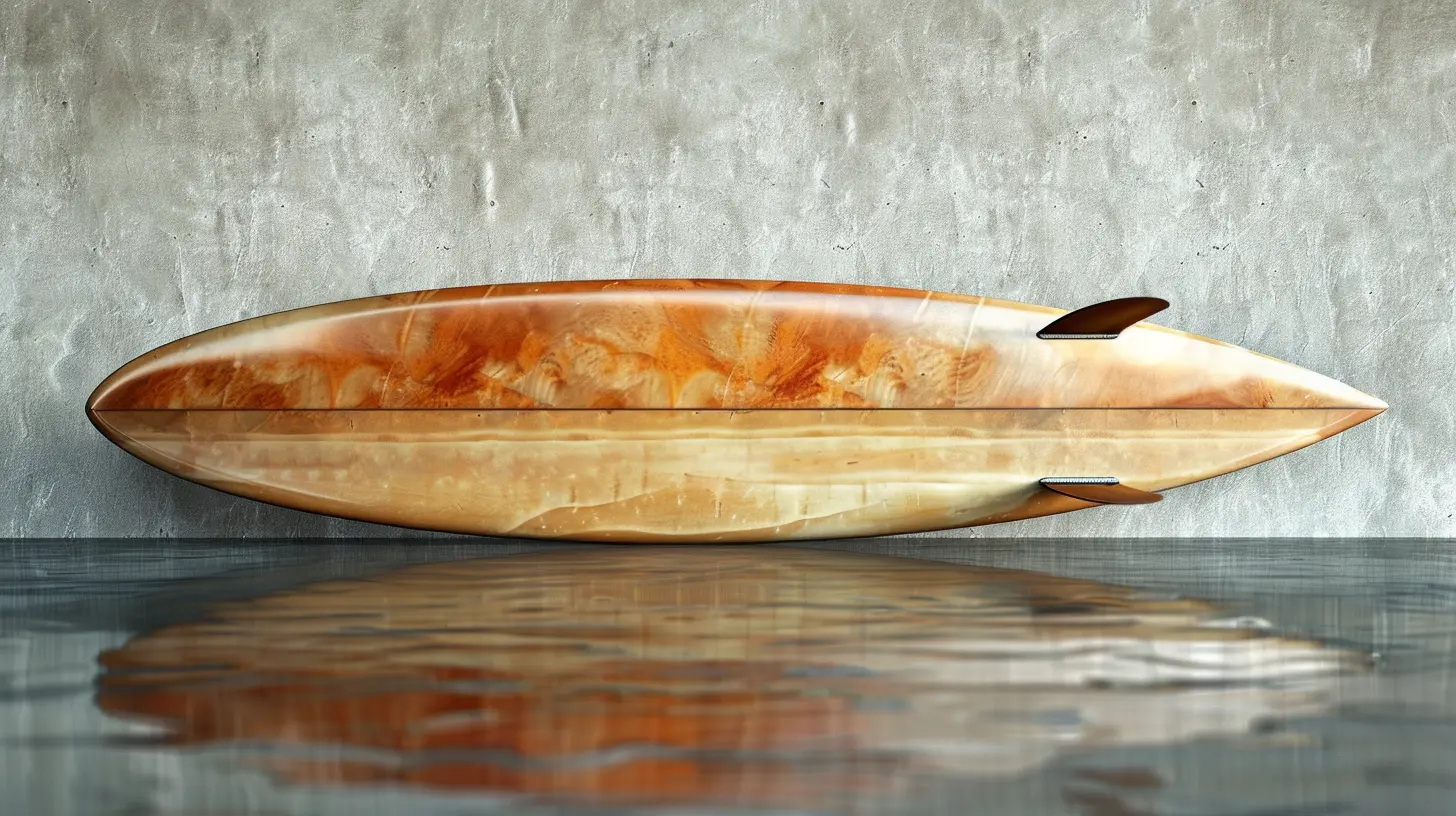How to Maintain and Repair Your Surfboard
27 June 2025
You're out there catching waves, wiping out, paddling for hours, and soaking up the sun—your surfboard goes through a lot, doesn’t it? Like any good wingman, your board needs a little TLC to keep it performing at its best. Whether you're a weekend warrior or a salty local who surfs every day, maintaining and repairing your surfboard is key to keeping the good sessions rolling.
In this guide, I’ll walk you through everything you need to know about surfboard maintenance and repair. From daily care habits to handling dings like a pro, we’ll cover it all in a laid-back, easy-to-digest way. Grab a coffee—or maybe a post-surf smoothie—and let’s dive in.
Why Surfboard Maintenance Matters
You wouldn’t drive your car without checking the oil, right? Surfboards may not have engines, but they demand just as much care. Proper maintenance extends your board’s lifespan, keeps it looking sharp, and ensures it performs as it should on the water.A neglected board can take on water, weigh you down, or even snap if the damage gets too bad. Not to mention, riding a damaged board can mess with your balance, mess with your confidence, and let's be real—mess with your style.
The Daily Care Routine: Keep It Simple
Taking care of your surfboard doesn’t have to be complicated. Here’s a list of things you can do after every session to keep your board in top shape.1. Rinse It With Fresh Water
Saltwater is no joke. It corrodes, corrodes, and corrodes. After each surf, rinse your board with fresh water to clean off the salt, sand, and any sea gunk that hitchhiked a ride. This quick rinse prevents long-term wear and keeps your board looking new.2. Dry It Properly
Don’t just toss your board wet into a hot car or leave it in a damp board bag. Moist environments can lead to mold, mildew, and rotting internal foam. Instead, dry it off with a towel and let it air out before storing it.3. Store It in the Shade
Sunlight is the enemy of surfboards. UV rays can yellow your board and weaken the fiberglass over time. Always store your board in a shaded area, or better yet, use a board sock or UV-protective cover.4. Check for Cracks and Dings
Even a tiny crack can let water seep in, which can ruin your board’s core over time. Run your hands over the surface of your board after every session. If anything feels off—soft spots, cracks, or dings—it’s time to patch it up before it gets worse.
How to Handle Dings: DIY Repair Tips
We’ve all been there. You dropped your board on the pavement, or maybe you collided with a rogue longboarder. Whatever the case, dings happen. Knowing how to fix them yourself can save you money and keep you in the water.There are two types of surfboard construction: PU (polyurethane) and EPS (epoxy). Knowing your board type is crucial because using the wrong repair materials can literally melt your board. Ouch.
Step 1: Identify the Damage
Not all dings are created equal. Some are superficial, while others require a full-on repair job.- Pressure Dings: These are small dents that don't expose the foam. Usually, they’re cosmetic and don’t need immediate repairs.
- Surface Cracks: If you can see foam, it needs fixing ASAP.
- Delamination: This is when the fiberglass separates from the foam. It's a serious issue and may need a pro’s touch.
Step 2: Dry It Out
If there’s any doubt that water got in, you have to dry your board. Keep it out of the sun but in a warm, dry area for a day or two. If it's wet inside and you seal it up, you're basically trapping the problem.Step 3: Sand Down the Area
Use medium-grit sandpaper (around 60-80 grit) to gently rough up the area surrounding the crack or ding. This helps the resin stick properly.Step 4: Apply Resin
Use the appropriate resin—polyester for PU boards and epoxy for EPS boards. You can grab ding repair kits at any surf shop or online. Mix it according to the instructions, apply it over the ding, and smooth it out with a plastic card or scraper.Step 5: Let It Cure
Place your board in a well-ventilated area and let the resin cure. Avoid direct sunlight unless the resin is UV-activated. Curing times vary, so check the resin label.Step 6: Sand and Smooth
Once the resin has hardened, sand it down with fine-grit sandpaper to get a smooth, even surface. Boom—your board is good as new (or at least water-tight).
When to See a Pro
You don’t have to be a hero. Some repairs are better left to the experts:- Major cracks or holes
- Fin box damage
- Delamination
- Broken tails or noses
- Waterlogged boards
A surf shop can give your board a professional fix with high-grade materials and tools you probably don’t have in your garage.
Long-Term Maintenance Tips
Want to keep your board lasting longer than your last relationship? Here's how to treat it right over the long haul.Rotate Your Boards
If you’re lucky enough to own more than one surfboard, rotate them. Different boards work for different conditions, and rotating reduces wear and tear on any one board.Don’t Surf Too Close to Rocks
Sounds obvious? You’d be surprised. Avoid shore breaks where the water gets shallow quickly, or reef breaks unless you know how to navigate them. Rocks and reefs are ding magnets.Use a Quality Board Bag
A board bag is like a helmet for your surfboard. It protects against dings, UV rays, and hot car interiors. Go for one with padding and a reflective exterior.Don’t Use Your Board as a Chair
We get it. Sitting on your board on the beach looks cool. But constant pressure on certain areas can lead to pressure dings. Grab a beach chair, trust me—your board will thank you.Keep Fins Tight
Loose fins mess with your ride and can cause structural damage over time. Regularly check that your fins are secure and tighten them if needed.Environmental Factors to Watch Out For
Nature can be unpredictable, and sometimes it’s not just you beating up your board.Sunlight
We mentioned this earlier, but it’s worth repeating. Just like how it can damage your skin, prolonged sun exposure weakens your board. Always store your board out of direct sun.Heat
Leaving your board in a hot car or garage? Not a great idea. Heat causes delamination and can warp the shape. Be mindful of where you store your gear.Saltwater
Again, rinse your board after every session. Salt is corrosive and can eat away at your gear over time, including your leash, wax comb, and traction pad adhesive.Final Thoughts
Taking care of your surfboard isn't rocket science, but it does require some consistency. Think of it like skincare—if you treat it right, it’ll stay smooth, strong, and ready for action. A well-maintained board enhances your experience on the water, helps you perform better, and saves you from costly repairs or replacements.So next time you towel off after a killer session, take a couple of extra minutes and give your board the love it deserves. That way, it’ll keep showing up for you—wave after wave.
Catch you in the lineup!
all images in this post were generated using AI tools
Category:
SurfingAuthor:

Onyx Frye
Discussion
rate this article
1 comments
Zella Romero
In ocean's embrace, your board must glide, With gentle hands and care as your guide. A stitch, a wax, and love’s repair, Keep the magic alive; ride waves with flair.
July 4, 2025 at 12:06 PM

Onyx Frye
Thank you for capturing the essence of surfboard care so beautifully! Your poetic touch adds a lovely perspective to the art of maintenance and repair.


